White hat link building describes the ethical and approved methods of increasing website traffic through links. It’s an alternative to unethical black hat seo tactics like spamming and buying links.
Unlike black hat techniques, white hat methods are approved by search engines and help your site rank higher on search engine (rankings) search engine result pages (SERPs) without future repercussions.
So, how can you use white hat link building to help your business? Keep reading to find out!
Table of Contents
ToggleWhat Is White Hat Link Building?
White hat link building is the process of acquiring links from other websites to improve the ranking of your website in SERPs. The term “white hat” refers to the fact that these methods follow Google’s Webmaster White Hat Link Building Guide Lines instead of “black hat link building” that seek to game the system.
Some common white hat link-building tactics include:
- Publish compelling content
- Create linkable assets
- Create Data-Driven Studies & Surveys
- Develop Unique White Hat Link Builder Tools & Resources
- Creating informative content such as infographics for others to use in their blogs
- Look for broken links
- Guest blogging to build links
- High-Quality Backlinks exchanging with other bloggers or high authority websites in your field
- Provide expert content for journalists and podcasters
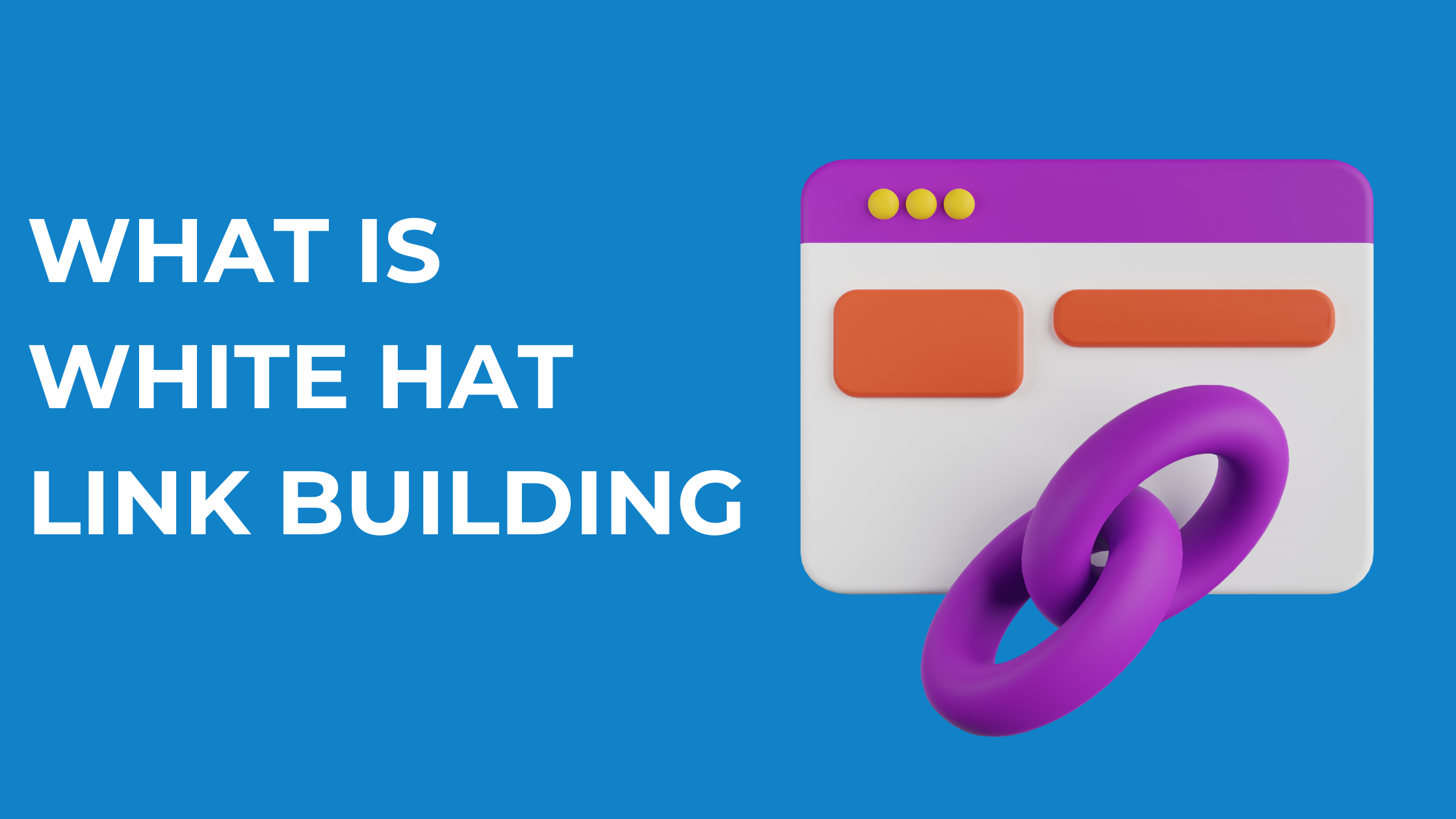
Why Is White Hat Link Building Important?
In the SEO world, white hat link building is considered a boring, ethical option. But dull doesn’t mean ineffective – white hat link building is essential if you want to create a sustainable, long-term SEO strategy. So let’s look at some of the advantages of white hat link building here:
Helps Rank Higher In SERPs
White Hat SEO is the practice of optimizing a website for search engines following Google’s guidelines. This process includes building a website with a great user experience and high-quality, relevant content. And, of course, it includes best practice link-building.
When done correctly, White Hat SEO can help you rank higher in search engine results pages (SERPs), driving more traffic to your website. In addition to helping you rank higher, White Hat SEO can also help you build trust and credibility with Google. As a result, you are more likely to receive clicks from users who are interested in what you have to offer. While implementing White Hat SEO techniques takes time and effort, the long-term benefits are well worth it.
Let’s take an example of a small business selling shoes online that competes against a much larger website that ranks for the same keywords. If this more extensive website has more high-authority links than your site, you will struggle to rank as high in the SERPs as your competitor, especially if your website has similar-quality content.
However, using White Hat SEO techniques, such as building content on unique keywords and building high-quality links to your website, you could level the playing field and potentially surpass your competitor in specific search engine results. In addition, your link-building efforts result in more traffic and leads to your website, which could mean more sales and revenue for your small business.
Helps Drive More Traffic To Your Website
In addition to helping you rank higher in SERPs, white hat link building can also help you drive more traffic to your website. Because when you build high-quality links to your website, you create a network of websites links pointing users to your site. When those websites linking are already considered authoritative, they pass that authority juice to you. Google picks up on this, and that reflects in the SERPs.
For example, let’s say you have a blog post ranking on the first page of Google for the keyword “link building.” If you have a high-quality link from a well-known website pointing to your blog post, users who click on that link will go to your site. These links provide not just referral traffic but that authority juice that will help you rank higher on Google.
Read: How to Check Ranking on Google
Helps Build Trust And Credibility
Link building can also help you build trust and credibility with Google. When Google sees that your website has high-quality links from other reputable websites, it will view your site as more credible and trustworthy. As a result, you are more likely to receive clicks from users who are interested in what you have to offer.
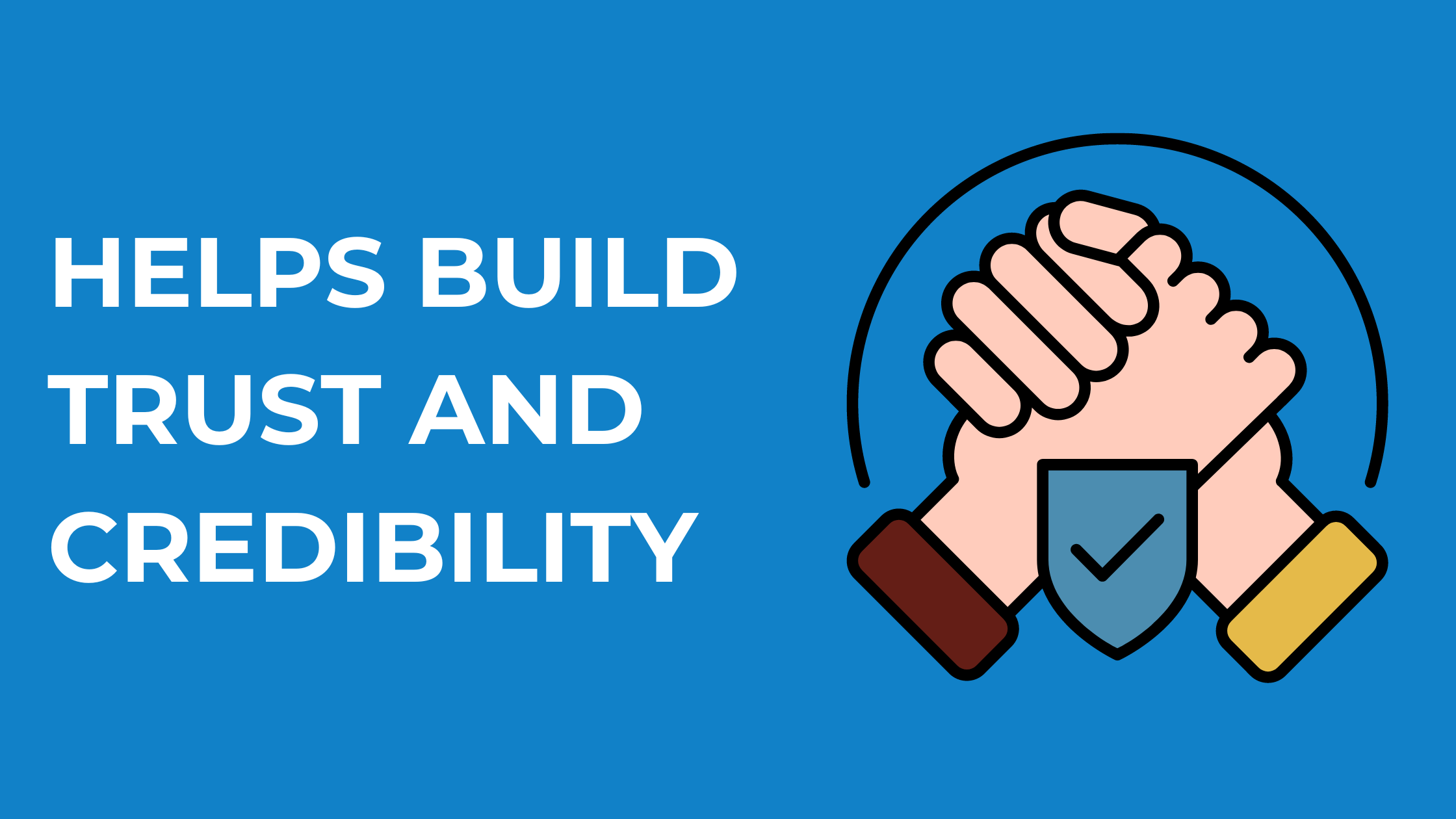
Helps Improve Your Relationships With Other Websites
When done right, link building requires you to reach out to other website owners and content managers to ask for links. Outreach is your opportunity to not just network but contribute to their site through guest blogs, replace a broken link (broken link building) to your site, or list your site’s resources on their website. You can continue to build upon all white-hat linking techniques with your new relationships.
For example, if you have a good relationship with the owner of a popular website, they may be more likely to feature your website on their site or link to your content. Again, this helps increase the reputation of your site and the likeliness to rank on SERPs.
How Can White Hat Link Building Benefit My Business?
There are many benefits to engaging in white hat link-building tactics.
Perhaps the most obvious is that it can improve your website’s ranking in SERPs, leading to more traffic and potential customers.
In addition, white hat link building can also help build relationships with other websites and businesses in your industry, increasing brand awareness and exposure.
Finally, because white hat link-building tactics involve creating high-quality content, it can also improve the overall reputation of your website and business. This can increase SERP rankings and even move you toward your SEO goals.

The Difference Between Black, Gray, and White Hat SEO Techniques
Although black hat SEO techniques may help gain more visitors, you may find black hat SEO techniques more attractive. However, Black Hat Search Engine Optimization techniques, such as generating links through your website network, are not ethical to rank in search engine results.
Gray Hat SEO techniques
Grey Hat link-building SEO techniques are between black hat and white hat SEO. They are not quite as unethical as black hat techniques but are also not as ethical as white hat techniques.
Some of the most common gray hat SEO techniques include:
Creating low-quality links to your website
A low-quality backlink is a link that comes from a website with little to no authority. Low-quality backlinks can hurt your website’s ranking and should be avoided. It’s not that these are unethical, but they aren’t going to do you much good.
Keyword stuffing
Keyword stuffing is the act of cramming a large number of keywords into your content in an attempt to rank higher in SERPs. To be sure, you need the right balance of keywords in your content. But throwing random keywords together just doesn’t work anymore. This technique can result in a lower ranking and should be avoiding it.
Link buying
Link buying is the act of paying for links to your website. Buying links is considered an unethical SEO technique and can result in a penalty from Google.
Paid links
Paid links are similar to link buying but are not necessarily purchased. Instead, paid links, you can also buy white hat backlink such as guest posts, may be exchanged for something else.
Spinning content
Spinning content is rewriting existing content and publishing on your blog. Avoid plagiarism at all costs. In any case, your readers want to learn valuable content, not just get a regurgitation of another website.
Commenting On Other Blog Posts To Get Backlinks
There may be better ways to improve your website’s ranking than commenting on other blog posts and backlinking to your site. Although this technique may help increase visitors, this technique may affect your website’s ranking when done in a spammy manner.
While using gray hat SEO techniques may help you rank higher in search engine results pages, it can also lead to negative consequences. For example, if Google finds that you are using low-quality or unnatural links to improve your ranking, you may find a penalty mark in your Google Search Console.

Black Hat SEO techniques
Black hat SEO techniques are not ethical to rank in search engine results. Some of the most common black hat SEO techniques include:
Private Blog Networks
Private blog network is a group of websites that link to each other to improve ranking. Private blog networks are considered a black hat SEO technique and can lead to negative consequences, such as a decrease in traffic or a penalty from Google.
Link farming
Link farming is creating links to your website from low-quality websites. If Google finds out you are using link farming to rank your website, it may penalize it.
Cloaking
Cloaking is the act of showing different content to users than what is actually on your website. However, cloaking is an unethical SEO technique and can result in a penalty from Google.
Spamming
Spamming is the act of sending unsolicited messages, usually for commercials. This includes sending messages to people who have not requested them, such as email spamming. It also includes leaving comments on blogs and websites unrelated to the topic.
Sometime people use this risky technique and don’t care that how many links they have created, so get’s google penalty on their website.
Using black hat SEO techniques can lead to negative consequences, such as decreased traffic and visibility for your website. In addition, Google may also penalize your website if it finds that you are using black hat SEO techniques.
Different Types Of Links
There are different types of links that can be used to improve your website’s ranking. These include:
- Do Follow Links
- No Follow Links
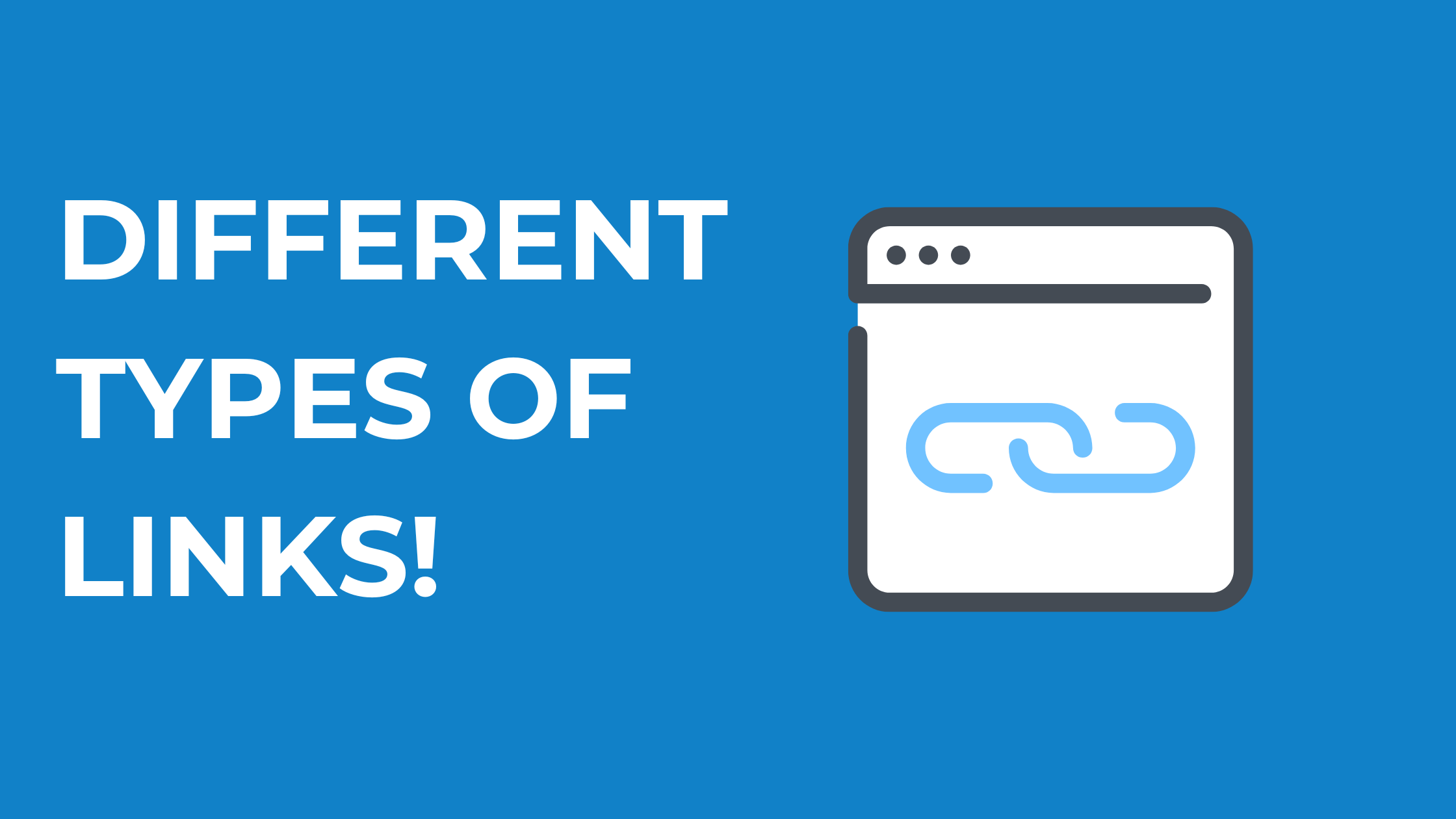
DoFollow Links
DoFollow links pass along “link juice” to the website they are linking to. This helps to improve the ranking of the linked-to website.
For example, when we do website linking with high authority like Moz.com, it is a DoFollow link and passes along “link juice,” which helps Moz.com rank higher in SERPs.
NoFollow Links
NoFollow links do not pass along “link juice”. However, they can still help to improve the ranking of the linked-to website by signaling to search engines that the website is relevant and popular.
An example of a NoFollow link would be if we were to link to an external website in the comments section of a blog post. This would be a NoFollow link and would not pass along “link juice,” but it would still help improve the linked-to website’s ranking.
Reciprocal Links
Reciprocal links are links between two websites that link to each other.
For example, if we were to link to Ahref from our website, and Ahref was to link back to us, that would be a reciprocal link.
These links have been considered beneficial for both websites in the past. But because of unethical behavior by SEOs, Google is skeptical of these types of links. This is especially the case if a link is placed on both websites in a short time span.
It is possible for reciprocal links to happen naturally over time. And this won’t cause penalties. Remember that you shouldn’t seek these out with potential blogging partners.
Likewise, you won’t be punished if you have multiple domains that you own that are linked to each other.
One-Way Links
One-way links are links from one website to another, only the linking website benefits. The linked-to website does not link back to the linking website.
For example, if we were to link to Neil Patel’s Ubersuggest from our website, but they don’t link back to us, that would be a one-way link. This would benefit their website because it would help improve their ranking in SERPs, but not ours.
Things To Consider While Linking to a Website
Some things to look for when linking to a website:
- The website’s content should be relevant to your website
- The website should have a good reputation
- The website should be popular
- The website should not be using black hat SEO techniques
When linking to a website, make sure the website is relevant to your own, has a good reputation, and is popular. You also want to make sure the website is not using black hat SEO techniques, as this could lead to negative consequences for your own website.
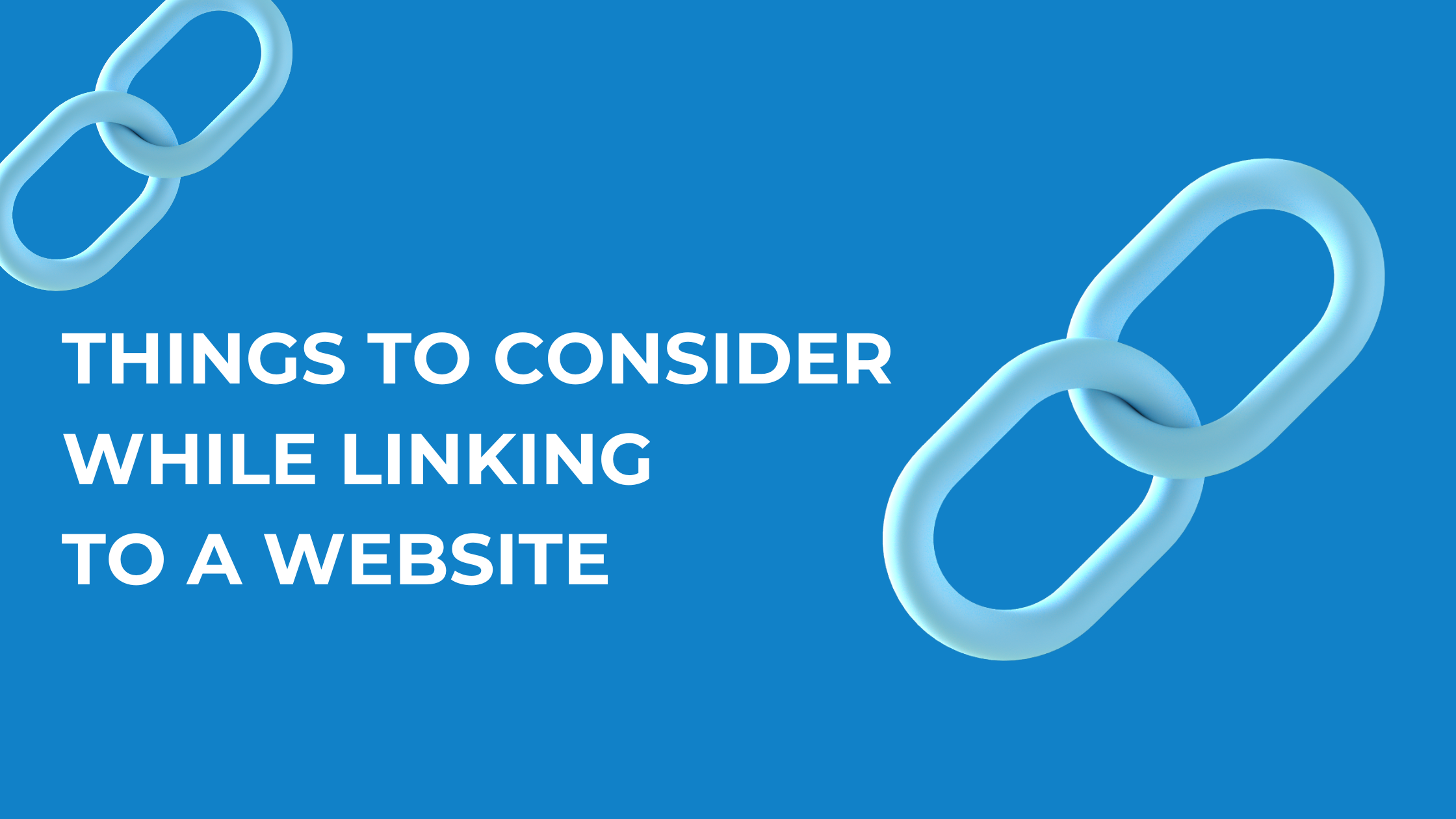
How Can You Build WhiteHat Links Effectively?
To do white hat link building effectively, there are a few things you must consider:
Get to Know Your Audience
WhiteHat link building techniques is based upon some general steps. The first step is to get to know your audience. What type of content do they like? What type of websites do they visit? Once you understand your audience, you can start to target the websites that would be most relevant to them.
For example, if your target audience is small businesses, you would want to target websites that are popular with small businesses.
Some ways to get to know your audience are through:
- Analytics
- Surveys
- Interviews
- Researching your competitors
- Creating buyer personas
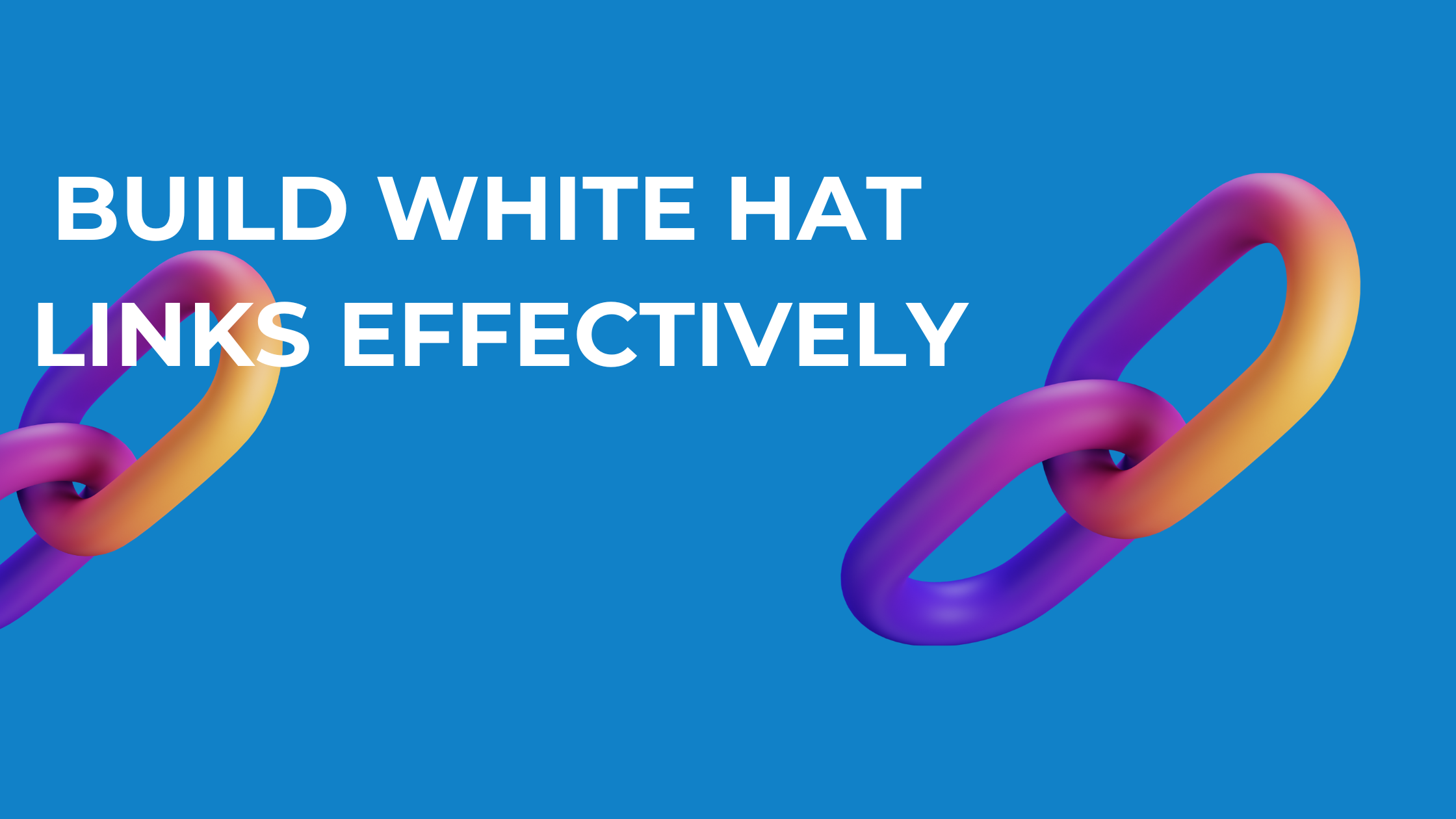
Start with Great Keywords By Competitive Analysis
You can’t just write any old content and expect it to perform well. For your content to be successful, it needs to be high-quality, informative, and interesting.
Your content should also be relevant to the keywords you are targeting. If you are trying to rank for the keyword “best books for new moms”, your content should be about the best books for new moms.
Don’t forget to promote your content once it’s published. You can promote your content on social media, forums, and other websites.
Focus on People and Not Numbers
Link building is not about numbers; it’s about quality. It’s better to have a few high-quality links than some low-quality ones.
A high-quality link is a link from a popular website relevant to your website. A low-quality link is a link from a website that is not popular and is not relevant to your website.
To get high-quality links, you need to create great content that people will want to link to. You also need to promote your content on social media and other websites.
Ensure Your Content, Messages and Tone is Engaging; Your Readers Will Come Back For More
According to the experts, the tone of your voice should be
- Respectful
- Humble
- Professional
- Helpful
Your content must also be engaging; otherwise, people will not want to read or link to it. You can add images, videos, and infographics to make your content more engaging.
Create a Cycle of Content Creation and Promotion
You need to create a cycle of content creation and promotion to get the most out of your link-building efforts.
- Create great content.
- Promote it on social media and other websites.
This process can be repeated repeatedly to get the most out of your link-building efforts.
Comment on Other People’s Blog Posts But Do It Sparingly
Commenting on other people’s blog posts is a great way to get links. However, you need to be careful not to spam.
Spamming is when you leave comments that are irrelevant or nonsensical just for the sake of leaving a link. This will only annoy the website owner and will likely get your comment deleted.
Tips For Getting Started With White Hat Link Building
If you’re new to link building or have little experience with it, don’t worry! There are plenty of resources available to help you get started.
Do Competitor Research
Whether you’re a new business or an established one, you need to know your competition inside and out if you want to stay ahead of the game. After all, they’ll be trying to do the same to you! Competitor research is a critical part of any link-building strategy, and it’s not as difficult as it may seem.
Competitor research is important for any business, but it’s especially crucial for link building. After all, if you want to rank higher in search engine results pages (SERPs), you need to have high-quality links from other reputable websites. But how do you get those links? By conducting competitor research. By taking a close look at your competition, you can identify their link-building strategies and imitate them for your own website.
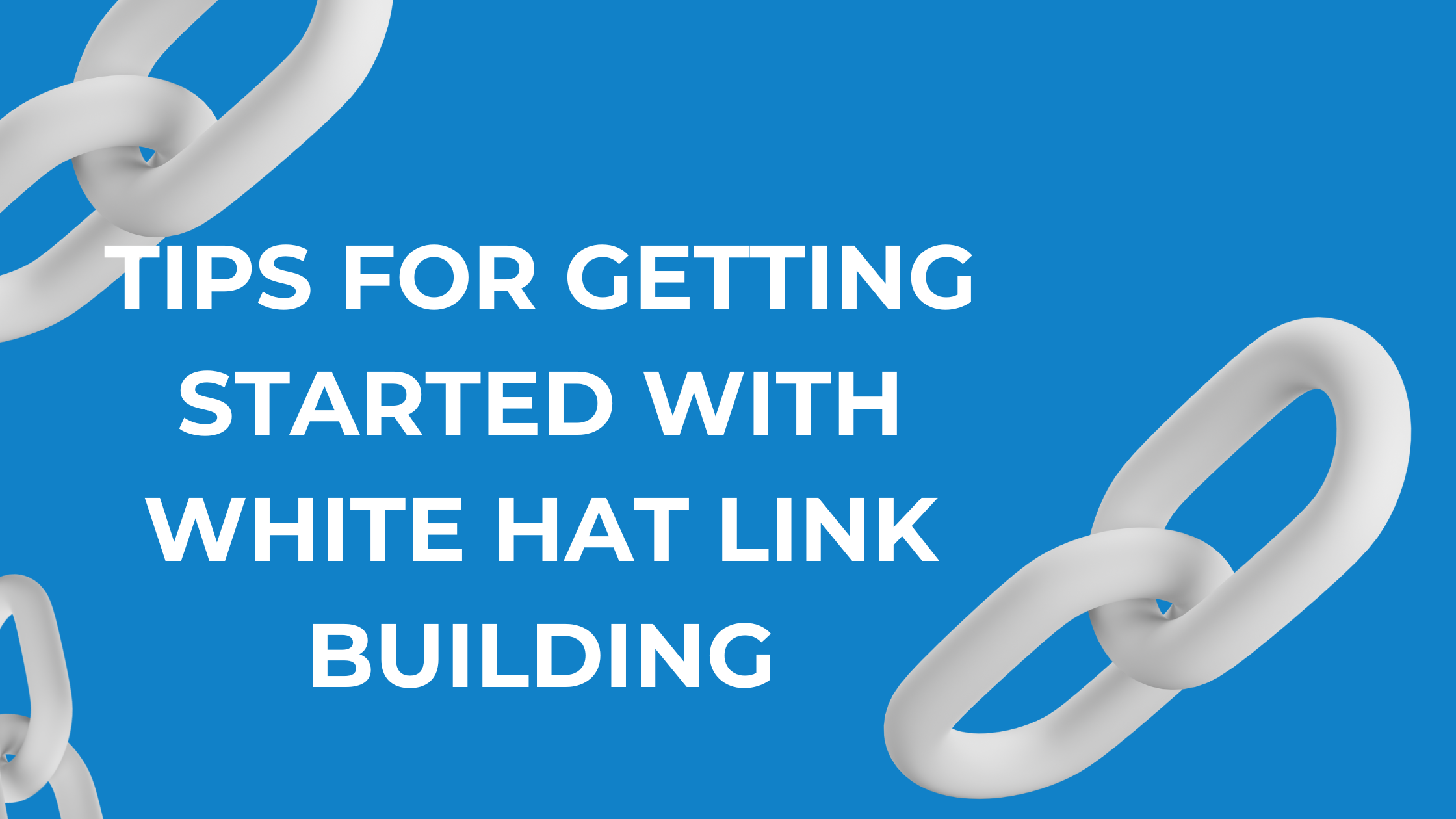
Here’s how you can do a detailed competitive research:
- Set up Google Alerts for your main competitors. This will help you stay up-to-date on their latest news and announcements.
- Use a tool like BuzzSumo to see which content your competitors get the most social media engagement. You can then create similar content for your own website and share it on your social media channels.
- Use a tool like Ahrefs or Moz Open Site Explorer to see which websites link to your competitors’ websites. You can then contact those websites and try to get them to link to your website.
- Analyze your competitor’s website design and structure. Are there any areas where they could improve? Can you take advantage of those areas with your own website?
- Keep an eye on your competitor’s link profile. If they lose links from high-quality websites, that’s an opportunity for you to swoop in and try to get those links for your website.
- Regularly check SERPs to see where your competitors rank for various keywords and phrases. If they’re outranking you, take a close look at their SEO strategy and see what changes you can make to YOUR website so that YOU can start ranking higher than them.
Conducting competitor research should be a regular part of any link-building strategy. By closely examining what your competition is doing, you can identify opportunities for yourself and build the best links for YOUR website. So don’t wait — start conducting competitor research today!
Look for broken links
Using the dead link checker or site audit feature in many tools like Screaming Frog, you can quickly see any broken links on a website. These are great opportunities to reach out and request a link.
Guest blogging to build backlinks
Guest blogging is when you write a blog post for another website in your industry. This is a great way to get exposure for your website and build backlinks simultaneously.
When reaching out to potential guest blogging partners, include the URL of a couple of your best blog posts.
Publish Great Content Onsite Consistently
If you want people to link to your website, you need to have content worth linking to. This means publishing high-quality blog posts, infographics, and other types of content regularly.
Not only will this help you get more links, but it will also increase traffic to your website and improve your SERP ranking.
You Might Interested in: How to Outsource Graphics Design For Great Content Images on Site
Highlight Your Awards And Badges
If you’ve won any awards or have been featured in any publications, showcase them on your website. This will not only add credibility to your website but can also lead to links from these sources.
You can also create badges for your website and share them on social media or other websites. People can then add these badges to their websites, which will help them build backlinks.
Helpful Tools For White Hat Links Building
Where humans cannot do it, machines become handy. As we know, link building is not easy and requires so much time if done manually.
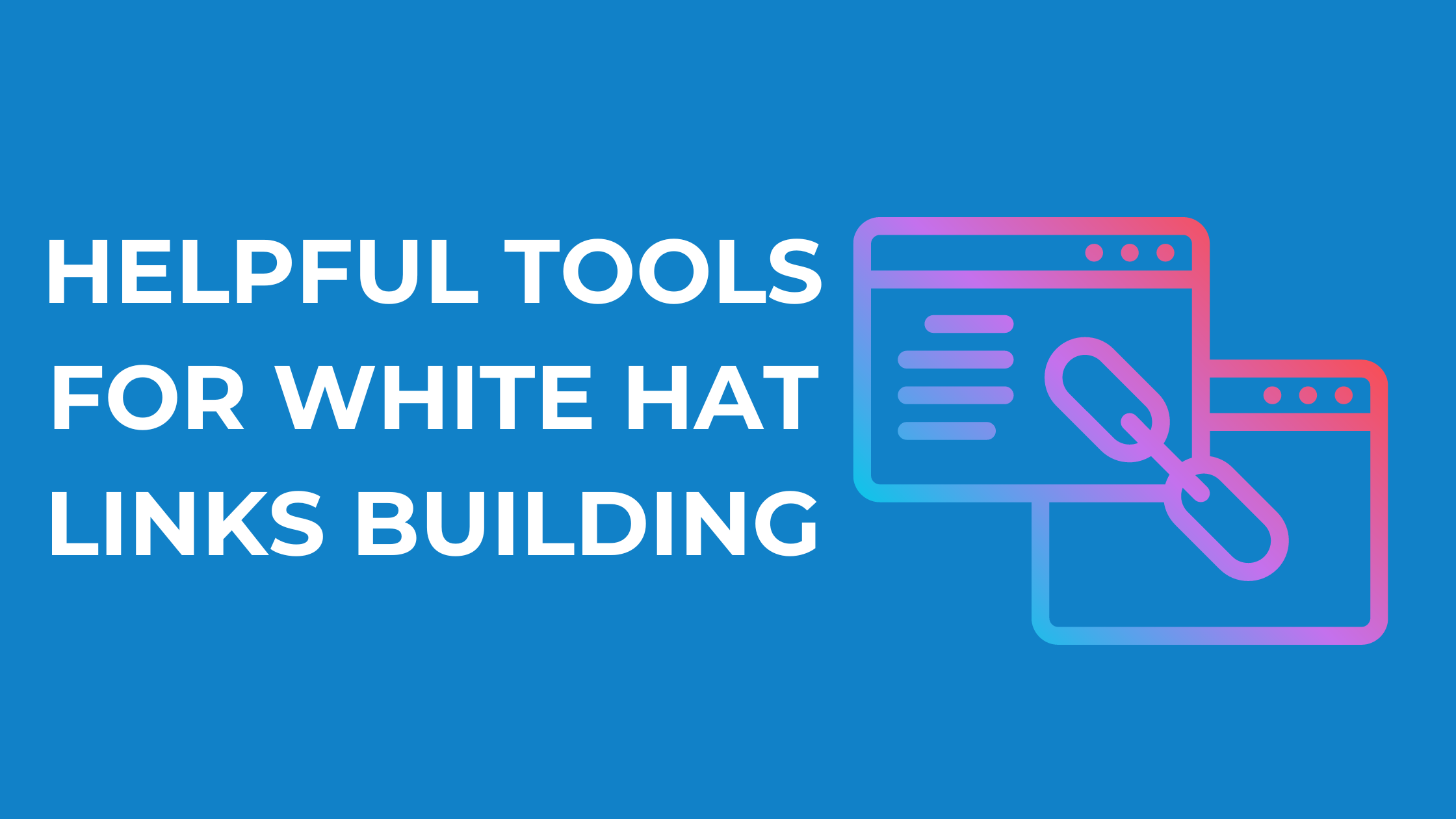
Some tools out there help make the process a little easier. Here are some of our favorites:
- Ahrefs: This link-building tool is great for conducting competitor research, looking at broken links, and more.
- Surfer SEO: This tool helps with on-page optimization for link building.
- HARO: This website connects you with journalists looking for sources, which can lead to press mentions and links.
- Screaming Frog: This tool helps conduct site audits and find broken links.
- BuzzSumo: This tool helps you find the most popular content on the web to create something even better.
- Google Search Console: This free tool from Google shows you your website’s search performance, including the number of backlinks.
- Moz: This tool has a suite of SEO tools to help with link building.
- Monitor Backlinks: This tool helps track your backlinks and see if any are removed or added over time.
- SemRush: This tool has a suite of SEO tools to help with link building.
- UberSuggest: This free tool generates keyword ideas and can be used for link building.
Now that we’ve gone over some white hat link-building techniques, it’s time to put them into practice. Start by brainstorming which method would be the best fit for your website, then get started building links today!
How to Track Your Links?
There are several ways to track your links. You can use a tool like Google Analytics or Ahrefs to track the estimated traffic you’re getting from your links. You can also keep an eye on your SERP ranking to see if your links are helping you move up in the search results.
Final Call: Hiring the Right Company Can Help You Avoid The Pitfalls Of White Hat Link Building
If you don’t have the time or expertise to do link building yourself, you can hire a white hat link building companies to do it for you.
Just be sure to hire a reputable company that uses white hat methods. Otherwise, you could end up getting your website penalized by Google.
FAQs About White Hat Link Building
How do you make a white hat backlink?
Find websites in your industry that accept guest blog posts to make a white hat backlink. Then, write a high-quality blog post and include a link to your website.
What is black hat link building?
Black hat link building is any technique that goes against Google’s guidelines. This includes buying links, using link farms, and other shady practices.
Which is the best link-building type?
Guest blogs are a very popular link-building strategy for many sites. It will help create quality information people will link back to.
Does link building still work?
Having more website visibility means linking is an essential SEO technique for a successful business. Because Google considers backlinks to determine its credibility, investing in links will help increase rankings.
Deep Dive: Are backlinks still good for SEO?

Wrapping up White Hat Link Building
White hat link building is a great way to improve your website’s ranking in SERPs while also adhering to search engine guidelines.
You can benefit from increased traffic, improved SERP rankings, brand awareness, engaging in content such as guest blogging, creating informative content, and participating in online communities.f



